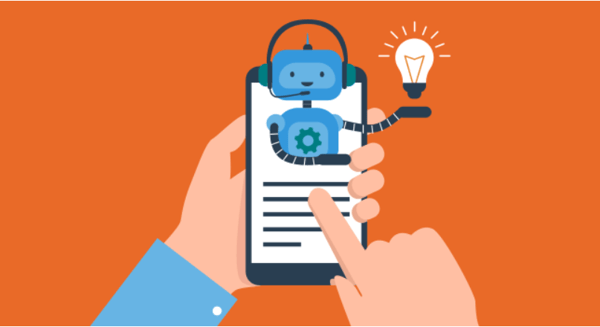EV Blog
Benjamin de Moncan | June 04, 2020
3 Best-Practices to Deliver a Personal Customer Self-Service Experience
No matter the industry, one thing holds true: customers expect a personal experience. You know you need to wow your customers. If you don’t, they will take to social media to tell their friends and colleagues. Your customer service agents are doing their best, but how can you take it to the next level?
Due to the need for cost reduction, self-service has taken the place of many customer-facing interactions. This doesn’t necessarily yield bad results. In fact, 90% of consumers expect a company website to have an online portal for customer service, and 63% of millennials start their customer service interaction online in a self-service portal, according to recent statistics.
Pair that with the fact that internally, self-service can improve the employee experience and increase employee satisfaction and it seems a no-brainer to incorporate this popular technology into your organization.
With the move to self-service platforms, how do you ensure that customers (and employees) aren’t just getting a one-size-fits-all approach?
How to Deliver a Personal Customer Self-Service Experience
No matter where your team is located or what changes your business may be experiencing, providing high-quality customer service is a top priority.
Self-service doesn’t mean the end of human interaction, rather, self-service can enhance human interaction and customer satisfaction with these three best practices.
Best-Practice #1: Create a Guided Experience with Virtual Assistants and Content Contextualization
To deliver a personal self-service experience, you must combine elements like virtual assistants and content contextualization to guide the customer through their journey.
A virtual agent or assistant is, as described by Chatbots.org, "... a computer generated, animated, artificial intelligence virtual character that serves as an online customer service representative. It leads an intelligent conversation with users, responds to their questions and performs adequate non-verbal behavior.”

From providing insights about a product order to automatically cancelling a financial transaction and issuing a refund, virtual agents can provide customers with all the information they need so your human customer service agents can dedicate more time to work on complex issues. The virtual agent can answer basic questions (with a stored FAQ), qualify a basic request (for example, a cable box that won’t start), and propose basic, guided instructions to solve the issue.
However, virtual agents without content contextualization may fall flat.
Content contextualization refers to the practice of analyzing the circumstances around the request to refine the results. This provides a more personal answer for each query and reduces the customer’s time spent searching for, and reading through, long or irrelevant articles.
For example, if a customer asks a virtual agent for help tracking an order, it can be helpful for the bot to analyze other questions and searches the same user has performed leading up to the request. This can help provide a clearer answer on specifically what the customer wants to track – whether they want shipping information or want to track the progress of production.
Another example of this could be an internal self-help user who needs to send specific cable boxes to customers. Self-help flows are connected to the CRM system, which then displays the cable box model of the customer so that the correct cable box is sent.
Content contextualization also helps ensure that the right answers are delivered despite potential language barriers. Rather than deal with frustrating or confusing prompts that they don’t understand, users are able to ask a question in their native language and in-turn are delivered relevant answers.
Many retailers are turning to virtual bots with content contextualization to assist customers and guide them through the buyer’s journey because of the additional insight to be gained as well. Through the use of artificial intelligence (AI), the agents can study the customer’s behaviors and dislikes in order to personalize the experience during the buying process. Knowledge and the buyers’ journey should be connected to send information from consolidated systems to reduce both the customer and employee effort. Virtual agents can then give customers product suggestions or recommendations and assist with tasks in a more helpful and meaningful way.
Best-Practice #2: Implement Outside-In Thinking
Design-centered thinking, also called outside-in, is an established methodology for product design, but doesn’t necessarily come naturally when designing customer service processes or self-service portals.
According to Gartner: “The idea behind an outside-in mindset is simple: Be aware of what is happening around you — be it a business objective or an upcoming recession — and use the capabilities of the planning function proactively to set up internal processes that are optimized for whatever will happen in the future.”
Outside-in means that rather than creating processes that satisfy internal needs without regard to the outward result, you instead design processes starting from the end and working backward. During the course of action, you can also assess the best way to implement these new procedures to create a better start and end to each customer interaction.
In the context of self-service, designing the customer experience from the user view may seem counter-intuitive, but working backward can improve the overall look and feel of the customer-facing self-service portal. This can lead to greater levels of customer satisfaction and a more personal, positive experience.
It is important to note that when multiple channels are involved, outside-in thinking requires the designer to consider not just one, but several experiences for different users. An omnichannel experience can be the key to designing a user-friendly design despite multiple uses. Outside-in thinking requires those creating the design to continually be aware of maintenance and adaptations that may be needed to change and refine the buyers’ journey.
Best-Practice #3: Consolidate Knowledge Bases for Consistent Interactions
One of the most frustrating interactions for customers occurs when knowledge in the self-service portal is different from what is being shared by the customer service agent.
It is also frustrating when information varies widely between sessions. A disconnect in information can make an organization appear sloppy and disorganized at best, and unstable at worst.
In order to provide a consistently positive, personal customer experience from both live agents and self-service, consolidation is key.
The best way to begin the consolidation process is through a content audit. Once you have performed a content audit to find discrepancies, using a knowledge management system is helpful.
Implementing a knowledge management system for self-service may be a large undertaking, but many organizations find that they have much of the knowledge need already formed and stored in one place or another. An example of this is knowledge being stored in a Wiki, shared drive, or across various departments and files.
For more guidance on building the knowledge management system for use in self-service, download our e-book, The Ultimate Guide for Getting Knowledge Management Right for Self-Service.
Consolidation of knowledge bases also helps guide AI to the correct stored knowledge, which is especially helpful to facilitate content contextualization. If the knowledge stored is clear, easy to understand, and consistent, then the answers provided will follow suit.
Additionally, securely consolidating stored data about a customer’s previous interactions can provide a more personalized self-service experience. This effectively creates a user profile for each customer and helps guide them to what they need without extra steps.
When the knowledge base and customer data is consolidated, customers will have consistent interactions whether they speak to a live agent or use a self-service portal because the messaging is clear. There is less room for frustration and confusion and customers and employees alike will reap the benefits.
Consistency is Key
According to Gartner, “Successful nurturing of customer relationships requires insightful, relevant and timely communications across multiple channels (such as face-to-face, phone, web, email, social media and SMS) and over a host of traditional and new devices.”
Personalization is key to providing a memorable self-service experience no matter the channel. Whether the interaction is with a new or returning customer, self-service can present the opportunity to delight them with a personal experience.
Subscribe to Email Updates
Benjamin de Moncan
Benjamin de Moncan has more than 15 years of experience in the customer experience industry. Currently acting as Senior Director of Product Marketing at Easyvista, he also played a role as a senior manager at Deloitte Consulting and COO of Knowesia, which was recently acquired by EasyVista. He has spent the last several years optimizing customer care for large financial and services companies, developing expertise in building digital organizations, and developing a passion for design thinking methodology and customer journeys' optimization. Outside of work, he spends all of his time with his family, playing guitar and piano.




